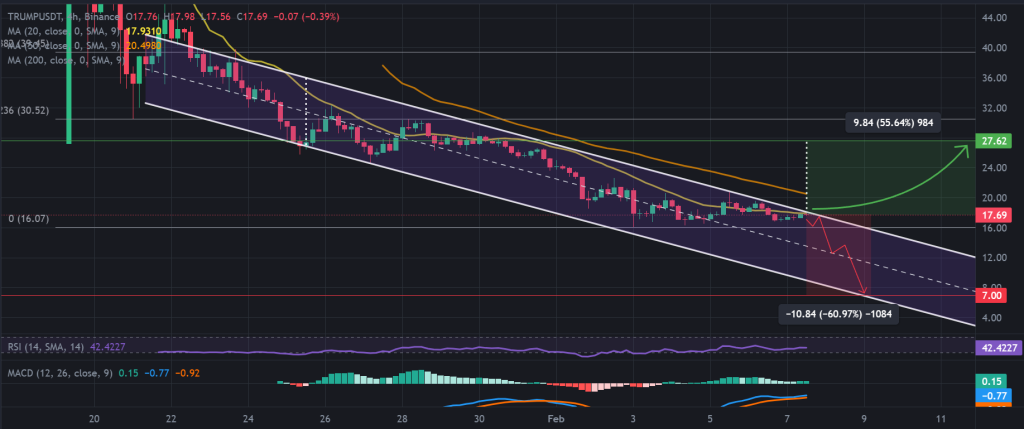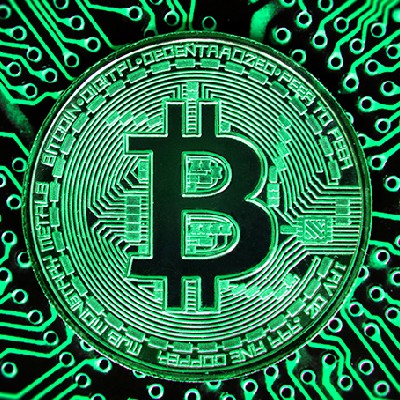
😳$BANANAS31 Price Prediction: What’s Next for This Exploding Meme Coin?✍️
As $BANANAS31 continues to make waves in the world of meme coins, the big question on everyone’s mind is: What’s next for this fast-growing cryptocurrency? As of March 2025, Banana For Scale has already surpassed a market cap of $55 million and built a community of over 110,000 holders. But as with any crypto, the future can be uncertain, so what does the price outlook for $BANANAS31 look like?
While price predictions can be tricky, $BANANAS31 has shown signs of significant growth. The strong community support increasing market exposure, and its viral cultural impact put it in a prime position for future growth. As the coin expands to more exchanges and as meme coins continue to capture more attention in the crypto space, it’s not far-fetched to see $BANANAS31 reaching new highs. Many analysts are hopeful that the coin could hit $0.05 or higher in the coming months, especially if its community-driven campaigns continue to go viral.
But what about the big question: Will $BANANAS31 hit $1? While the current price may seem far from that mark, anything is possible in the unpredictable world of meme coins. For $BANANAS31 to reach $1, it would require significant increases in market cap, a sustained community effort, and widespread adoption across major exchanges. Reaching $1 is certainly a long-term challenge, but with the right momentum and continued cultural impact, $BANANAS31 could potentially reach milestones that many didn’t expect—though, as with all meme coins, there’s no guarantee.
BANANAS31+1.46%
MAJOR+1.74%
External Market Factors and Their Impact on the Future Performance of $Bananas31 Token
Introduction
The cryptocurrency market is highly volatile and influenced by a variety of external factors. $Bananas31, like many other tokens, is subject to these influences, which can impact its price movements, trading volume, and overall market sentiment. Understanding these external market factors is crucial for traders and investors looking to predict future performance.
1. Market Sentiment and Social Media Trends
The perception of a token in the crypto community plays a critical role in its performance. $Bananas31, classified as a "meme" and "innovation" token, may experience price fluctuations based on viral trends, influencer endorsements, and online discussions. Hype-driven movements, as seen with Dogecoin and Shiba Inu, could cause rapid price increases or declines.
2. Bitcoin and Ethereum's Market Influence
Major cryptocurrencies like Bitcoin and Ethereum often dictate the overall market direction. If Bitcoin experiences a bullish trend, altcoins, including $Bananas31, may also see an upward movement. Conversely, a major sell-off in Bitcoin can trigger panic in smaller tokens, leading to potential declines.
3. Regulatory Developments
Government regulations can have a profound impact on the cryptocurrency market. Announcements of stricter regulations, taxation policies, or outright bans in key markets like the U.S., China, or the EU can affect investor confidence. On the other hand, positive regulatory developments, such as the approval of Bitcoin ETFs, could boost the market, indirectly benefiting $Bananas31.
4. Macroeconomic Factors (Inflation, Interest Rates, Global Economy)
Global financial trends, such as inflation rates, central bank interest rate decisions, and economic stability, also influence the crypto market. During times of economic uncertainty, investors may either seek refuge in cryptocurrencies or move away due to risk aversion. The performance of $Bananas31 will likely correlate with broader economic conditions.
5. Liquidity and Exchange Listings
The accessibility of $Bananas31 on major exchanges directly impacts its trading volume and price stability. If the token is listed on a reputable exchange with high liquidity, it is likely to experience increased adoption and reduced volatility. Conversely, delistings or lack of liquidity can lead to sharp price swings.
6. Technological Developments and Utility
Tokens that evolve with improved technology, security, and usability tend to perform better in the long run. If $Bananas31 integrates new utilities, partnerships, or ecosystem expansions, it could gain long-term investor confidence.
Conclusion
The future performance of $Bananas31 depends on a combination of market sentiment, broader crypto trends, regulatory decisions, macroeconomic factors, exchange listings, and technological developments. While predicting the exact price movements is challenging, staying informed about these external influences can help traders make more strategic investment decisions.
$BANANAS31
MOVE+2.50%
BANANAS31+1.46%
Fundamental vs. Technical Analysis of the Kilo Token: Which Better Predicts Future Performance?
The cryptocurrency market is highly volatile, and investors often rely on different analytical approaches to predict the future performance of a digital asset like Kilo token. The two primary methods used are fundamental analysis (FA) and technical analysis (TA). Each has its advantages and limitations, and choosing the right approach depends on an investor’s strategy, risk tolerance, and time horizon.
Fundamental Analysis (FA) of Kilo Token
Fundamental analysis assesses the intrinsic value of an asset based on real-world data, project utility, market conditions, and economic factors. When analyzing Kilo token fundamentally, key areas to consider include:
1. Utility and Use Case
What problem does Kilo solve?
Is it widely adopted in the DeFi ecosystem or other sectors?
Does it have unique technological advantages over competitors?
2. Team and Development
Who are the developers and leaders behind Kilo token?
How active is the project in improving its technology and expanding its ecosystem?
Are there strong partnerships or collaborations with established organizations?
3. Tokenomics and Supply Dynamics
What is the circulating supply vs. total supply?
Is there inflation or deflation in the token supply due to staking, burning, or rewards mechanisms?
How is liquidity maintained in the market?
4. Market Sentiment and Adoption
Is the token gaining traction in terms of user adoption?
What is the general sentiment on social media, news outlets, and crypto communities?
Are there any major regulations or legal challenges affecting its growth?
Fundamental analysis is best suited for long-term investors who want to understand the potential for sustainable growth and whether Kilo is undervalued or overvalued.
Technical Analysis (TA) of Kilo Token
Technical analysis, on the other hand, focuses on past price movements, trading volume, and market psychology to predict future price trends. This approach relies on charts, patterns, and mathematical indicators rather than project fundamentals.
1. Candlestick Patterns and Trends
Patterns like doji, engulfing, and head-and-shoulders can indicate potential reversals or continuations.
Trends are identified through price action and trend lines.
2. Moving Averages (MA)
Short-term moving averages (e.g., MA5, MA10, MA20) indicate immediate price momentum.
Long-term moving averages (e.g., MA50, MA200) help identify overall market trends.
3. Support and Resistance Levels
Key price points where the token finds support (buyers step in) or resistance (sellers step in).
These levels help traders decide entry and exit points.
4. Volume Analysis
High trading volume can confirm trends, while low volume may indicate weak momentum.
A sudden spike in volume can signal upcoming price movements.
5. Technical Indicators
Relative Strength Index (RSI): Measures whether Kilo is overbought or oversold.
MACD (Moving Average Convergence Divergence): Identifies bullish or bearish momentum.
Bollinger Bands: Indicate potential volatility and price breakouts.
Technical analysis is more suitable for short-term traders who look for price fluctuations and profitable entry/exit points within shorter timeframes.
Which Analysis is Better for Predicting Kilo’s Performance?
The answer depends on the investor’s goals:
Long-term investors should rely more on fundamental analysis, ensuring Kilo has strong real-world applications and long-term growth potential.
Short-term traders should use technical analysis to identify price trends and execute profitable trades based on market momentum.
A combination of both FA and TA often provides the most comprehensive approach. FA determines whether Kilo is a worthwhile investment, while TA helps with timing market entries and exits.
Conclusion
Both fundamental and technical analysis are valuable tools in predicting the future performance of Kilo token. While fundamental analysis provides insights into the token’s underlying value and long-term potential, technical analysis helps navigate short-term price movements effectively. Investors and traders should assess their risk tolerance, investment horizon, and market conditions before deciding which approach to prioritize.
$KILO


 最低価格
最低価格 最高価格
最高価格 
















































